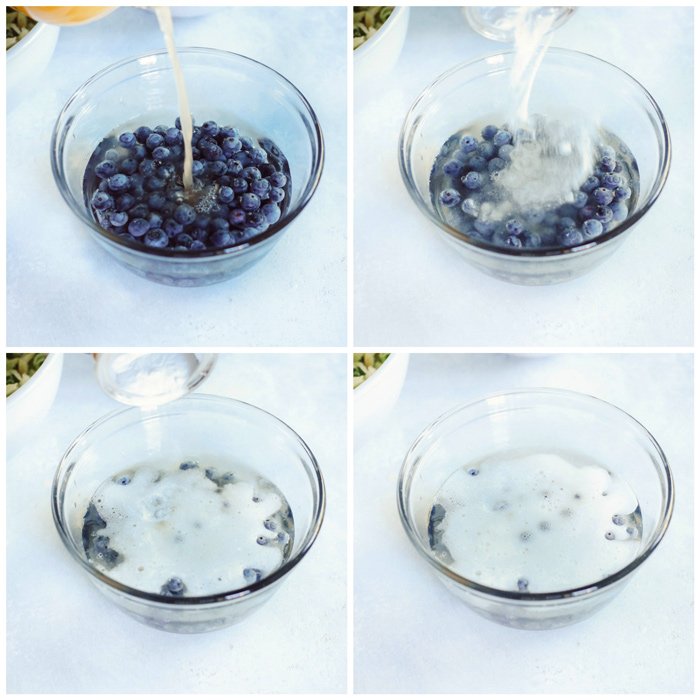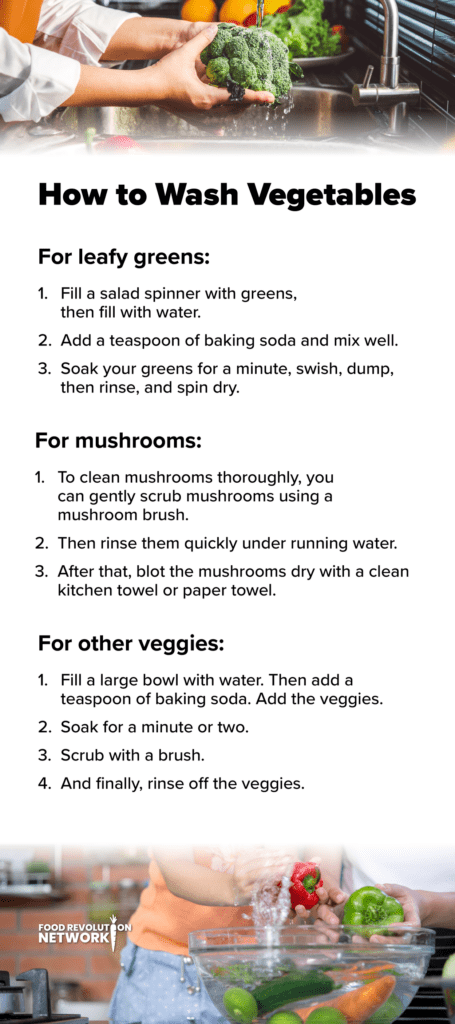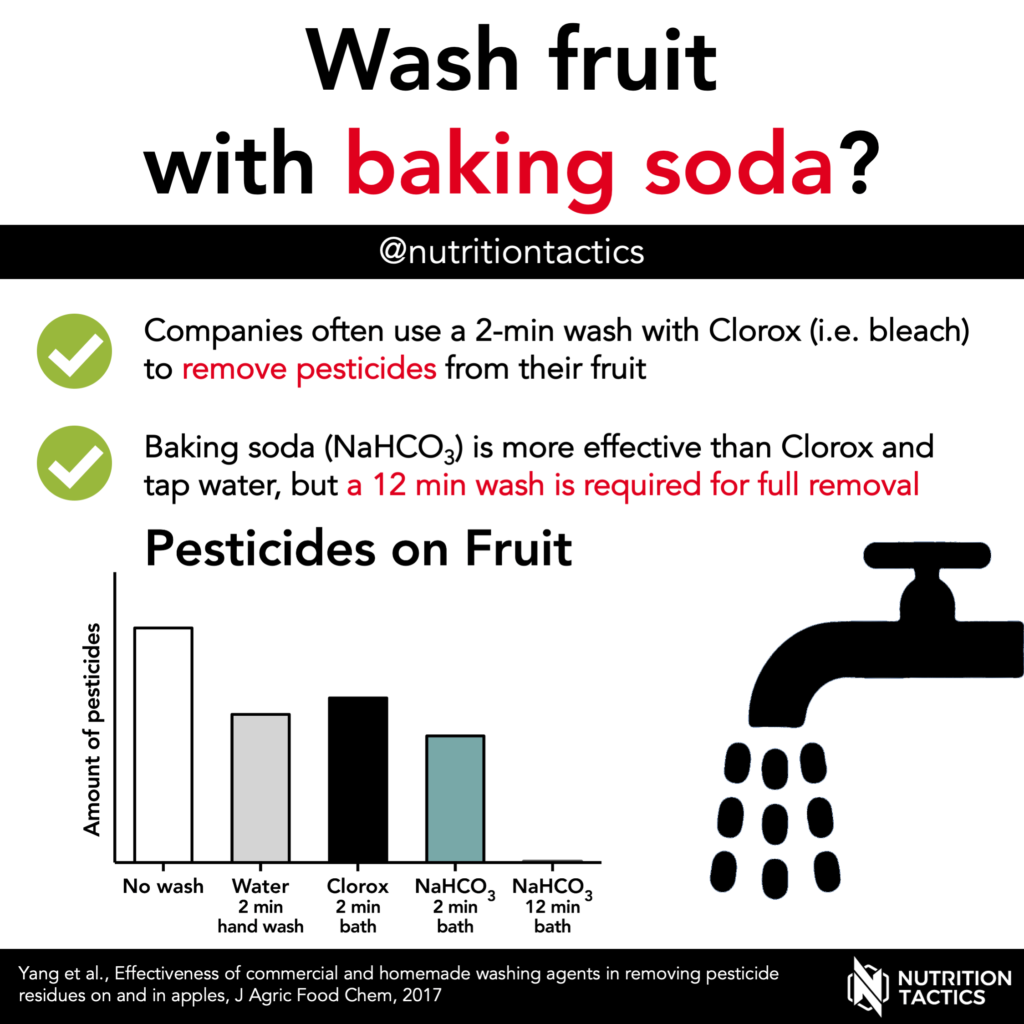Have you ever wondered if it’s better to clean produce with vinegar or baking soda? The debate on the best way to rinse fruits and vegetables to remove pesticides, bacteria, and dirt can be quite robust. With health and safety at the forefront of many minds, finding the most effective method for cleaning your produce is crucial.

The Importance of Cleaning Produce
Before jumping into the specifics of vinegar versus baking soda, it’s essential to understand why cleaning produce is necessary. Fruits and vegetables can carry contaminants such as pesticides, pathogens, and dirt that may pose health risks.
Cleaning produce properly helps to reduce the risk of foodborne illnesses and ensures that what you’re about to eat is as clean and safe as possible.
Pesticides
Pesticides are substances used to prevent, destroy, or control pests. However, they can also leave residues on fruits and vegetables. Long-term consumption of high levels of pesticide residues can pose health risks.
Bacteria and Pathogens
Produce can harbor harmful bacteria and pathogens such as E. coli and Salmonella. These can lead to foodborne illnesses which can be severe for some people, particularly the very young, the elderly, and those with weakened immune systems.
Dirt and Debris
Simple dirt and debris can also cling to the surfaces of fruits and vegetables. While they might not be harmful, nobody wants a gritty salad!
Vinegar: An Effective Cleaning Agent
Vinegar has long been touted as a natural cleaning agent. Cheap and ubiquitous, its primary component is acetic acid, which has antimicrobial properties.
How to Clean Produce with Vinegar
- Solution Preparation: Mix one part vinegar to three parts water. For example, if you are using one cup of vinegar, mix it with three cups of water.
- Soak: Immerse the produce in the vinegar solution for about 10-15 minutes.
- Rinse: After soaking, rinse the produce thoroughly with clean water to remove any lingering vinegar taste.
Pros of Using Vinegar
- Effective Against Pesticides: Studies suggest vinegar can remove a significant amount of pesticide residues.
- Kills Bacteria: The acetic acid in vinegar has antibacterial properties, making it effective against harmful bacteria.
- Readily Available: Vinegar is a common household item, making it a convenient option.
Cons of Using Vinegar
- Smell and Taste: Some people might find the vinegar smell unpleasant, and residue can alter the taste of produce if not rinsed thoroughly.
- Corrosive Nature: Prolonged use may wear down kitchen tools and surfaces if not handled carefully.
Baking Soda: A Versatile Cleaning Solution
Baking soda, or sodium bicarbonate, is another kitchen staple often recommended for cleaning. It’s a mild alkali that can help dissolve dirt and grease.
How to Clean Produce with Baking Soda
- Solution Preparation: Dissolve one teaspoon of baking soda in about two cups of water.
- Scrub: Gently rub the produce with the solution using your hands or a vegetable brush.
- Rinse: Rinse thoroughly with clean water to remove all traces of baking soda.
Pros of Using Baking Soda
- Safe and Non-Toxic: Baking soda is non-toxic and safe to use around food.
- Effective Cleaner: It’s effective at removing surface dirt and grime.
- Pesticide Removal: Some studies suggest that baking soda can help in reducing pesticide residues.
Cons of Using Baking Soda
- Residue: If not rinsed completely, it may leave a gritty residue on the produce.
- Taste: Although less significant than vinegar, baking soda can also affect the taste if not rinsed thoroughly.
Comparative Effectiveness: Vinegar vs Baking Soda
Both vinegar and baking soda have their strengths and weaknesses when it comes to cleaning produce. The best choice depends on your specific needs and preferences.
Pesticide Removal
- Vinegar: Effective at removing a variety of pesticides but may not be as potent as specialized commercial produce washes.
- Baking Soda: Shown to be very effective at removing pesticides, potentially even more so than vinegar.
| Aspect | Vinegar | Baking Soda |
|---|---|---|
| Pesticide Removal | Effective | Highly Effective |
| Bacteria Elimination | Excellent | Good |
| Ease of Use | Simple soak | Requires more scrubbing |
| Taste Impact | Can leave a tangy taste | Minimal taste impact, if any |
| Availability | Very common | Very common |
Bacteria Elimination
- Vinegar: The acetic acid makes vinegar highly effective at killing bacteria and pathogens.
- Baking Soda: Successfully removes bacteria, but perhaps not to the extent that vinegar does.
Ease of Use
- Vinegar: Simply soaking the produce makes it a straightforward method.
- Baking Soda: Often requires more effort to scrub the produce effectively.
Taste and Smell
- Vinegar: May leave a noticeable taste and smell if not rinsed well.
- Baking Soda: Minimal impact on taste, but can leave a residue if not thoroughly rinsed.

Combining the Two: A Potential Solution?
Some suggest combining vinegar and baking soda for an even more powerful cleaning solution. While this might seem logical, remember that vinegar (acidic) and baking soda (basic) neutralize each other when mixed, rendering the solution less effective. Using them sequentially, however, might provide the best of both worlds.
How to Use Both
- Vinegar Soak: Start with a vinegar soak to eliminate bacteria.
- Baking Soda Scrub: Follow with a baking soda scrub for thorough cleaning and pesticide removal.
- Rinse: Always ensure you rinse thoroughly after both steps to remove any residues.
Other Natural Alternatives
While vinegar and baking soda are popular, other natural alternatives can also effectively clean produce.
Lemon Juice
Lemon juice has similar acidic properties to vinegar, making it an effective natural cleaner that also leaves a pleasant scent.
Salt Water
Salt water can help in removing dirt and contaminants. Simply dissolve salt in water and soak the produce.
Commercial Produce Washes
If DIY solutions aren’t your preference, commercial produce washes are formulated specifically for this purpose. Always opt for ones with minimal chemicals.

Practical Tips for Cleaning Different Types of Produce
Different types of produce might require various cleaning methods. Here’s a quick guide:
Leafy Greens
- Steps: Separate the leaves, soak in your chosen solution, and then rinse thoroughly.
- Suggestions: Use vinegar for its antimicrobial properties.
Root Vegetables
- Steps: Scrub thoroughly with a vegetable brush and your chosen solution, rinse well.
- Suggestions: Baking soda works well to remove dirt from crevices.
Berries
- Steps: Soak gently in the solution, rinse under a gentle stream of water, and pat dry.
- Suggestions: Use vinegar to kill bacteria without damaging sensitive skins.
Hard-Skinned Produce
- Steps: Soak in solution or rub well with baking soda, then rinse.
- Suggestions: Either vinegar or baking soda depending on your preference.
Conclusion: Making an Informed Choice
Taking the time to clean your produce effectively is a simple but significant step towards safer eating habits. Whether you choose vinegar or baking soda—or even decide to use both sequentially—understanding the pros and cons of each method helps you make an informed decision based on your needs. Always remember to rinse thoroughly after cleaning to ensure the best taste and minimal residue.
Both vinegar and baking soda are excellent, natural choices for keeping your fruits and vegetables clean and ensuring they’re safe to eat. Depending on factors such as pesticide residue, bacterial concerns, and personal preference for taste and smell, you can select the method that best suits your needs. Stay informed and happy cleaning!

